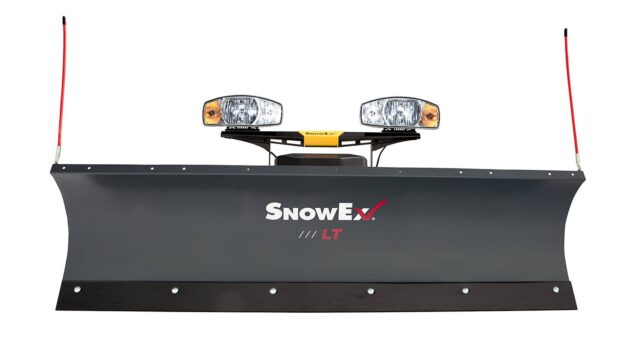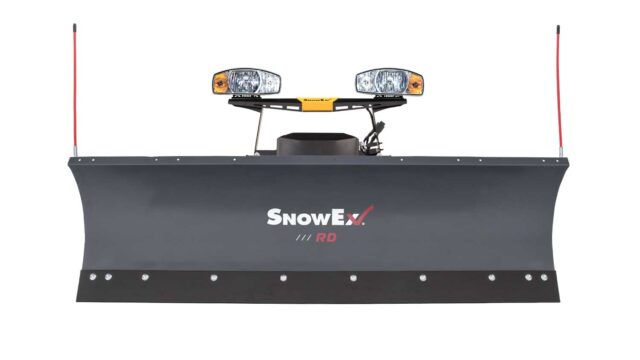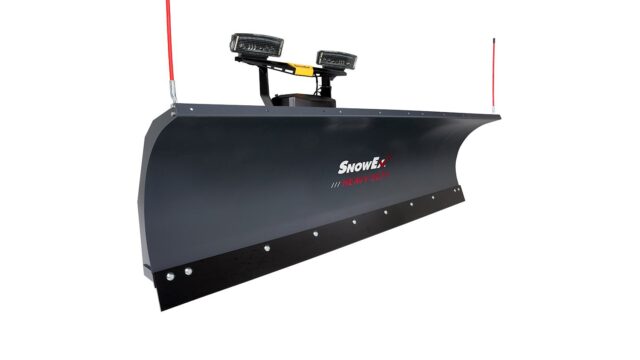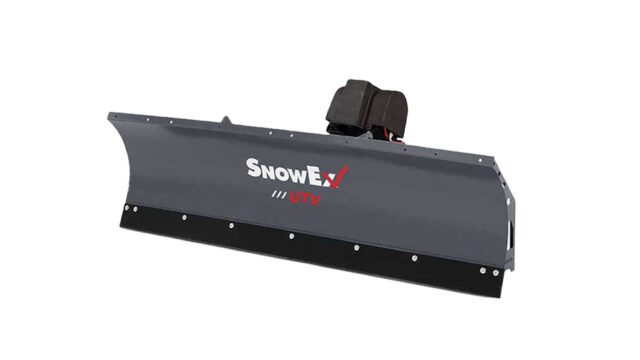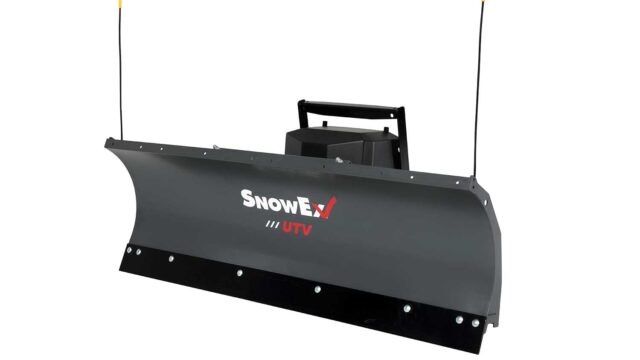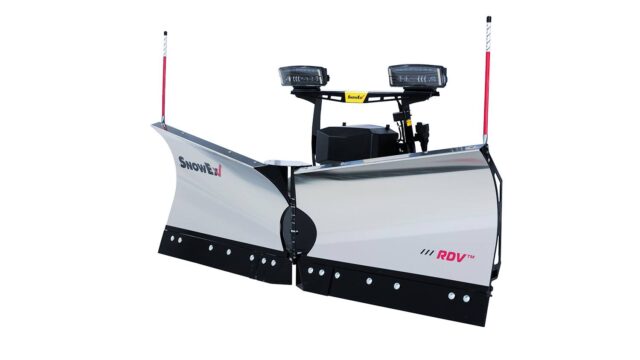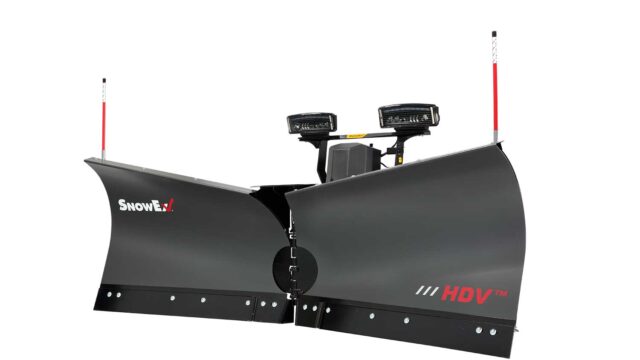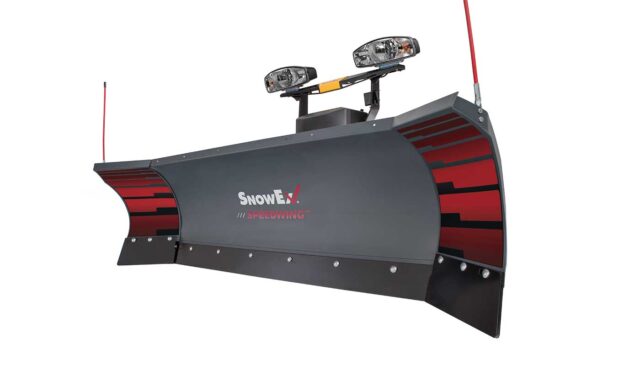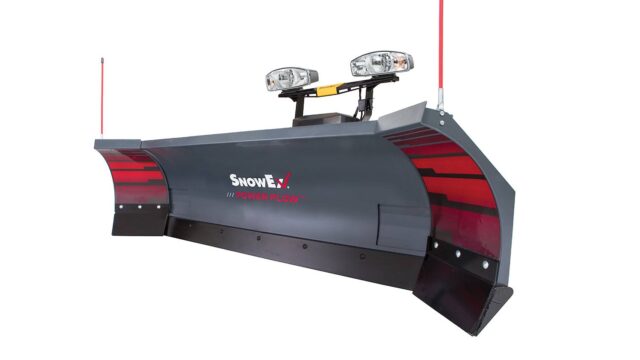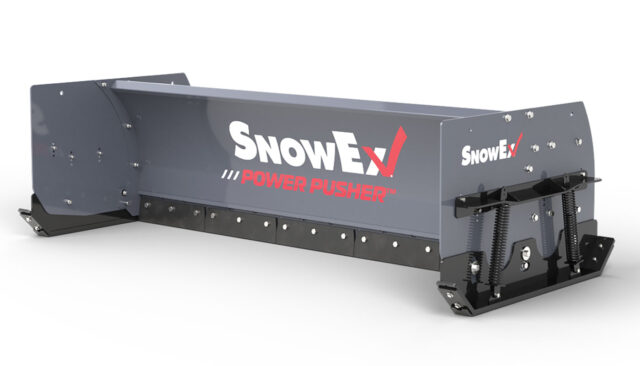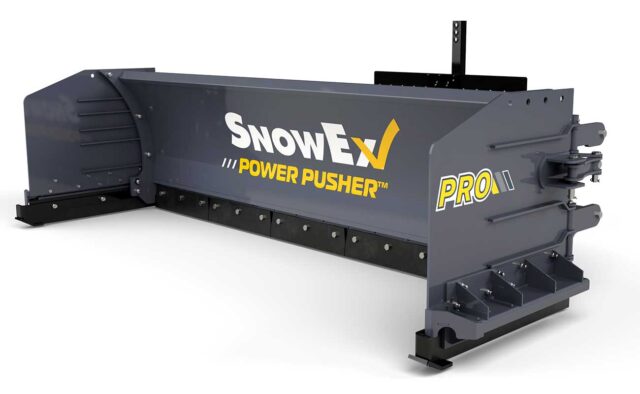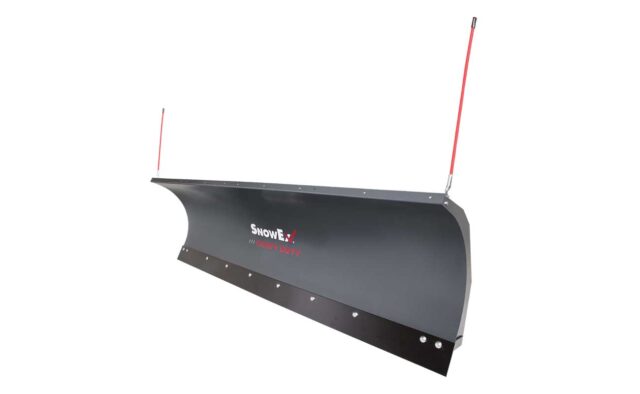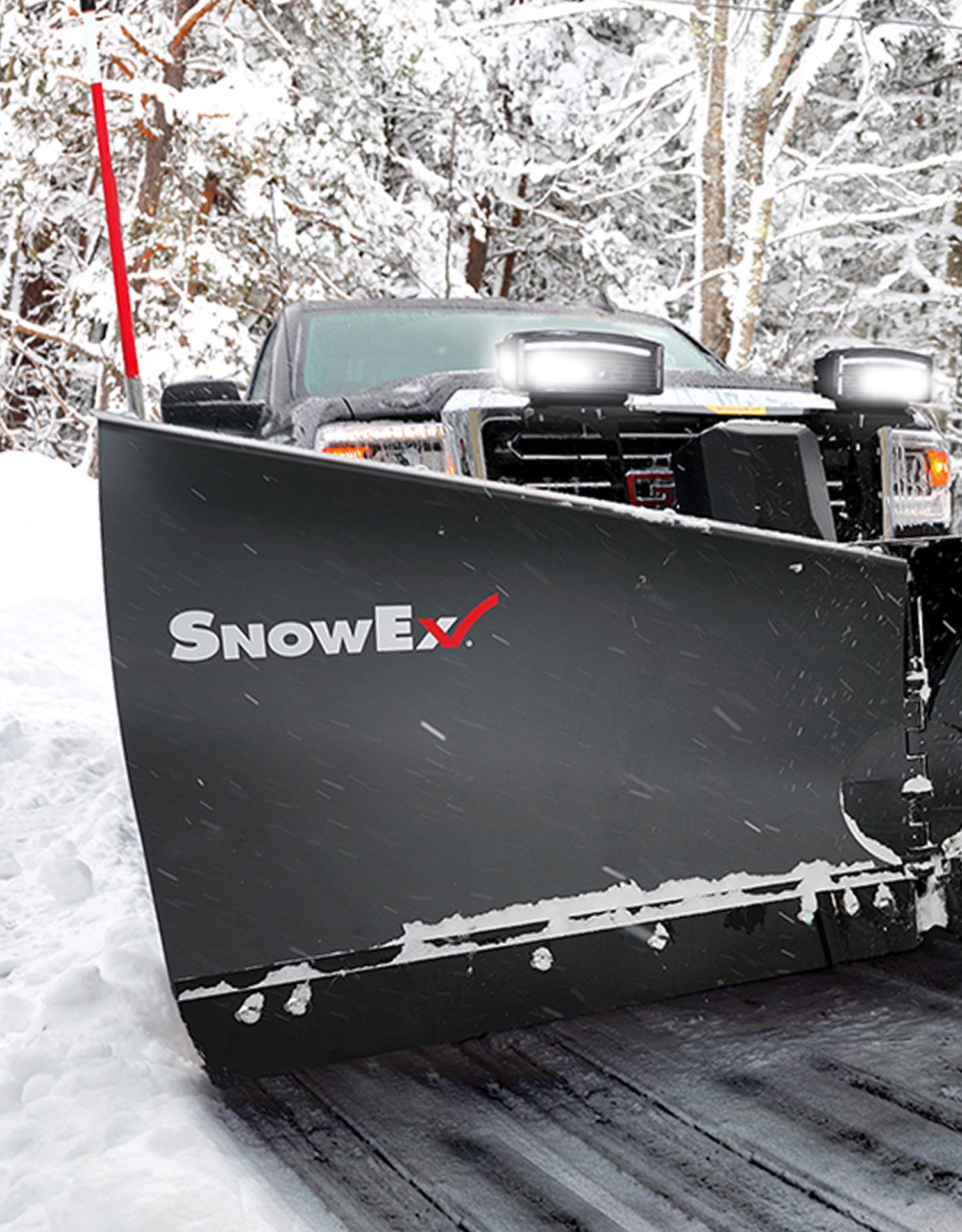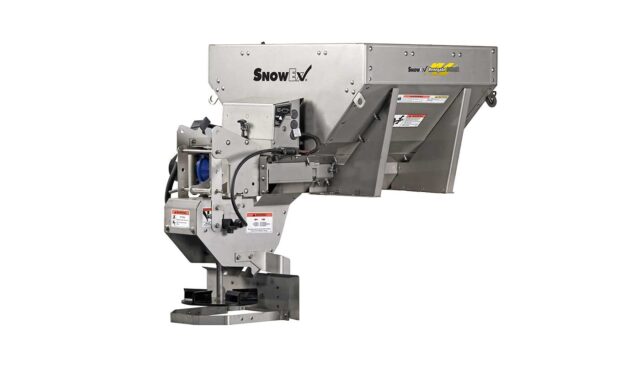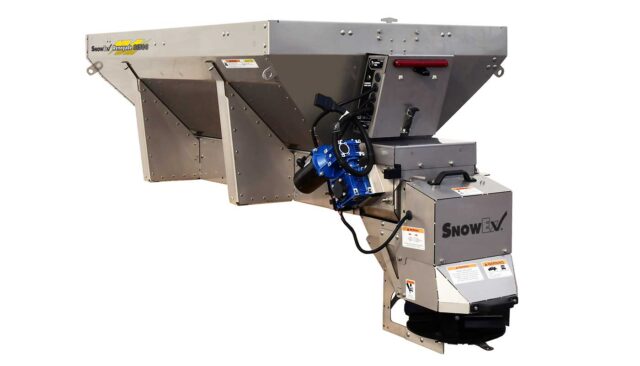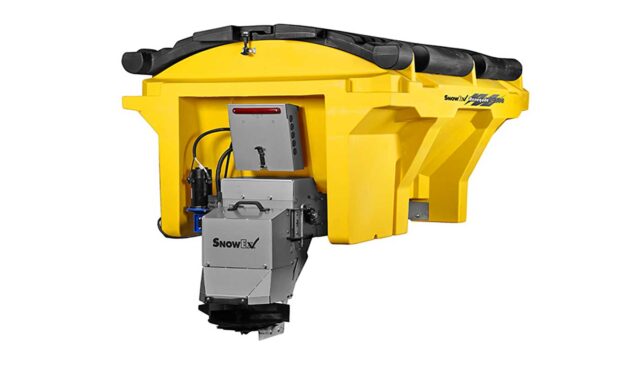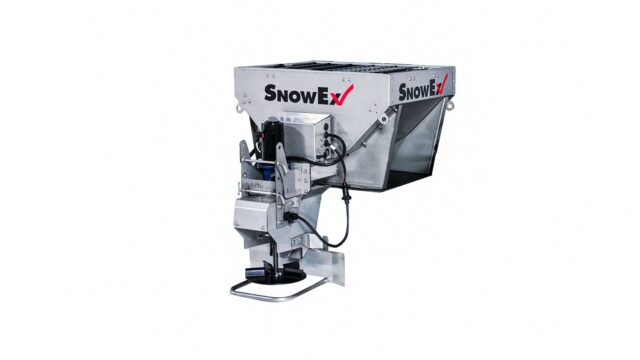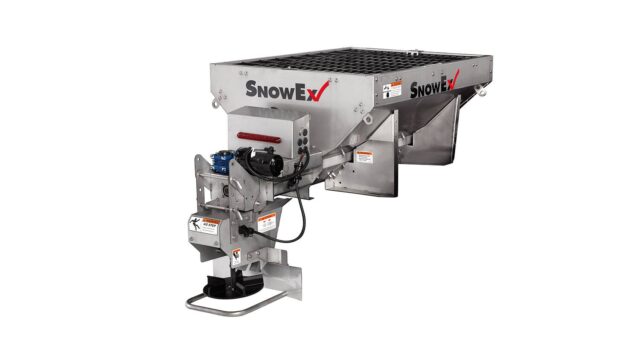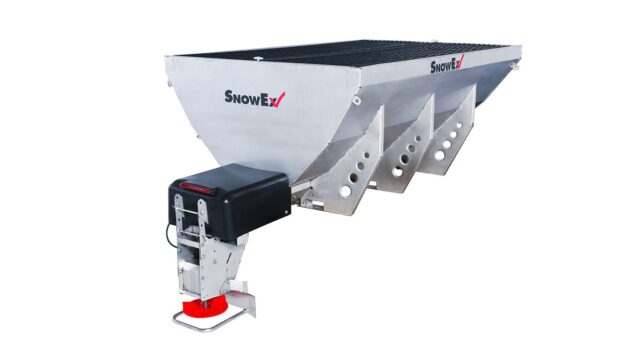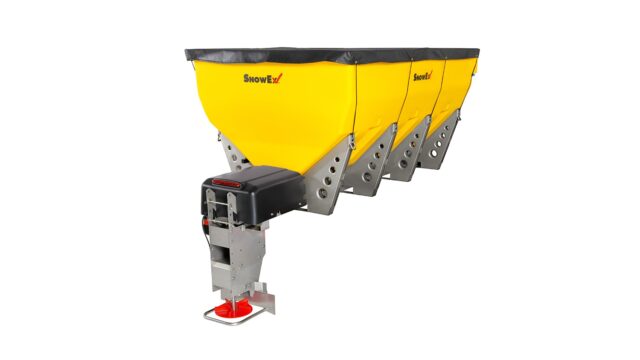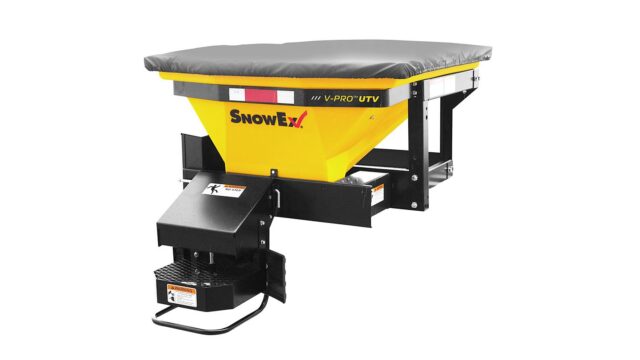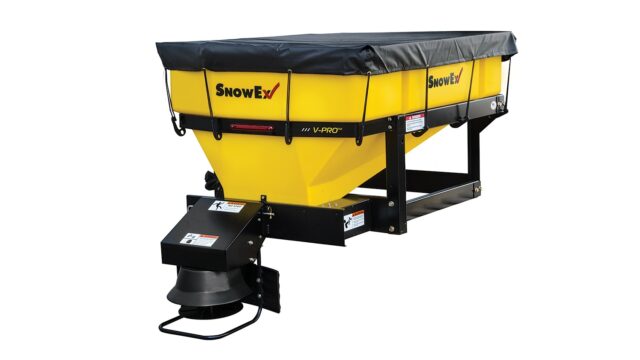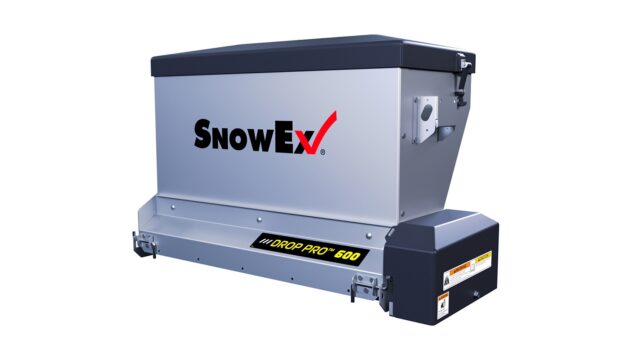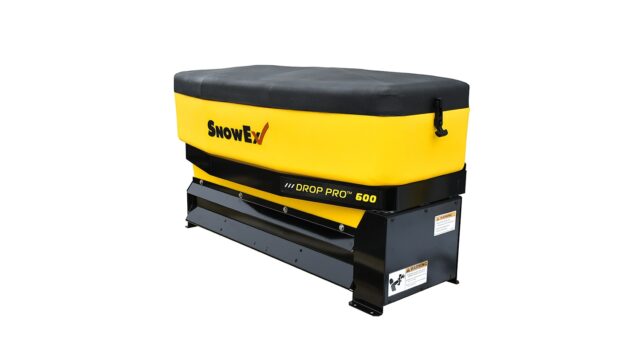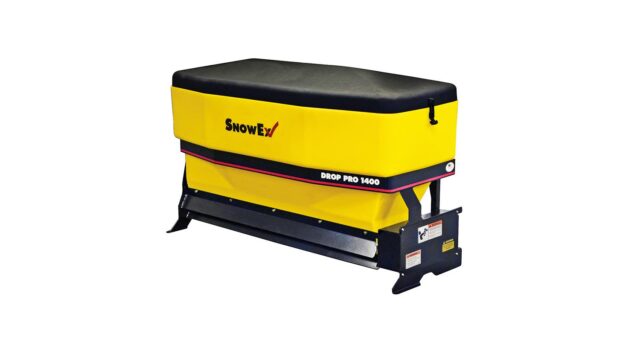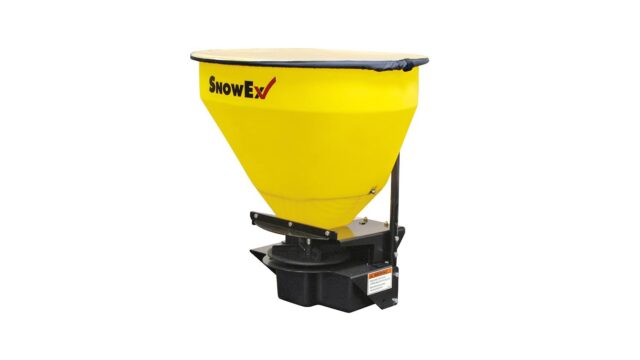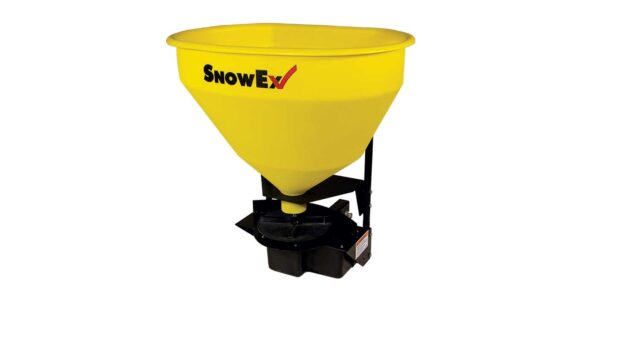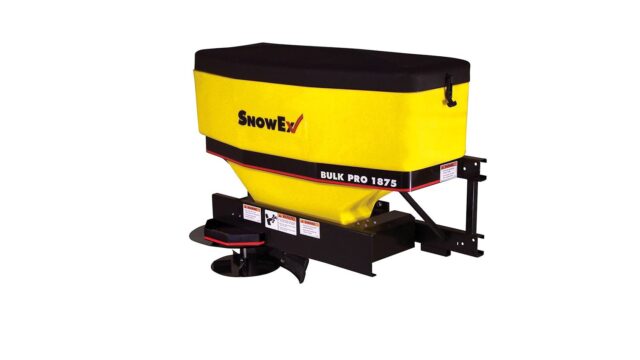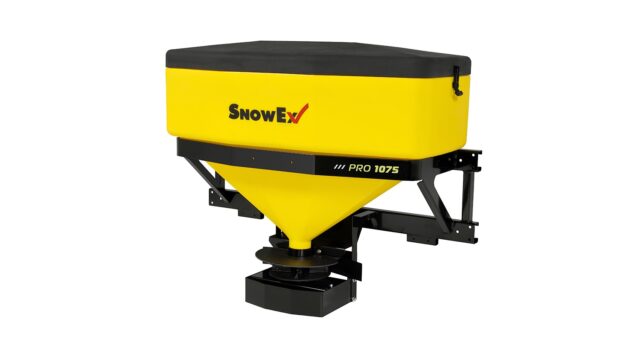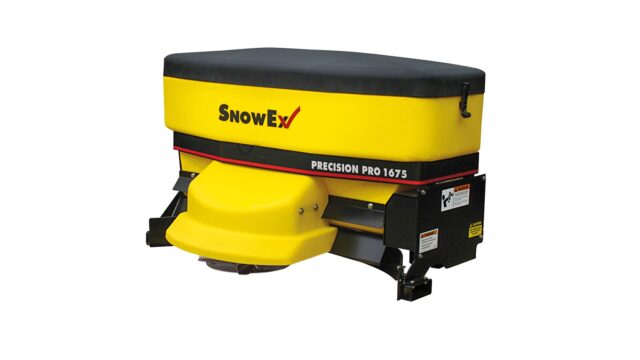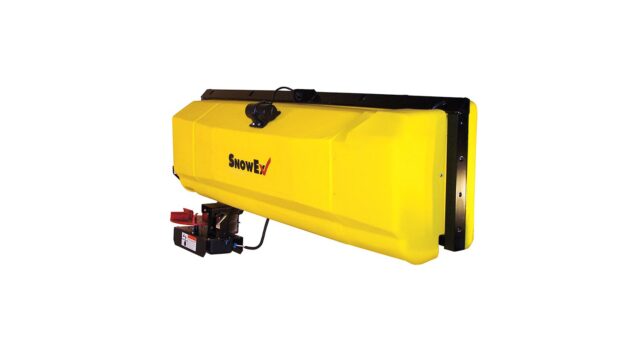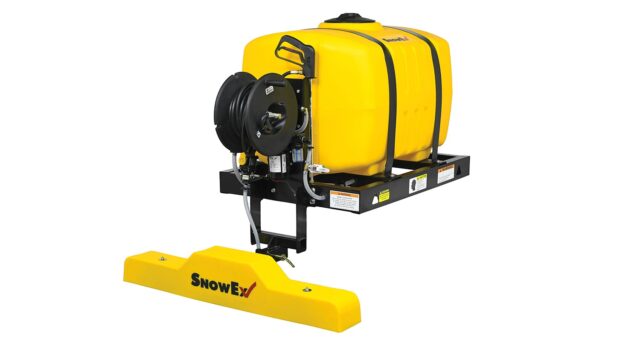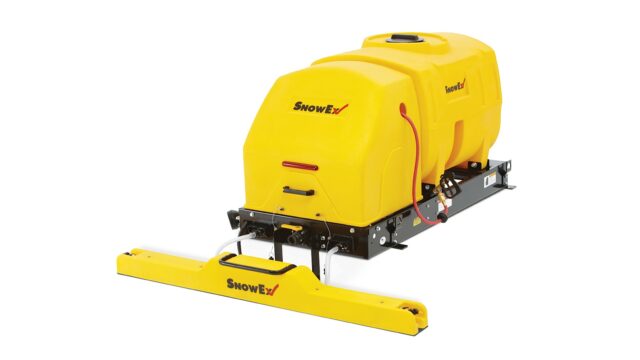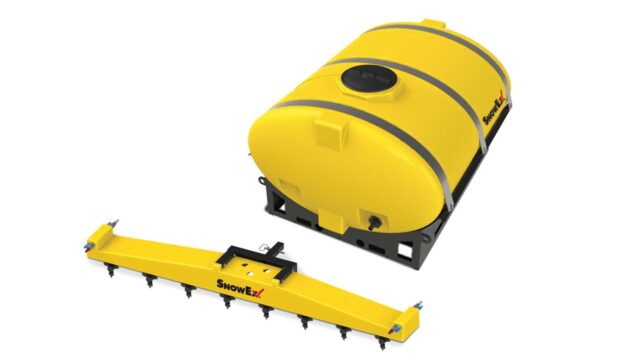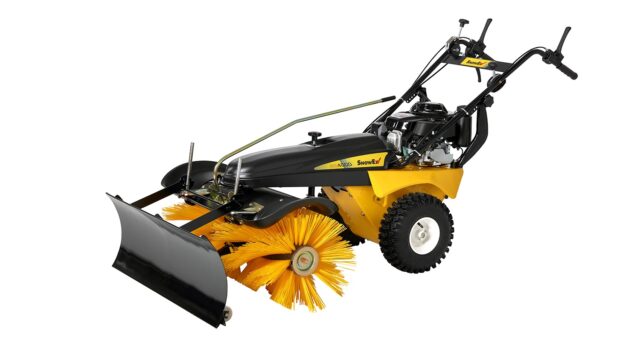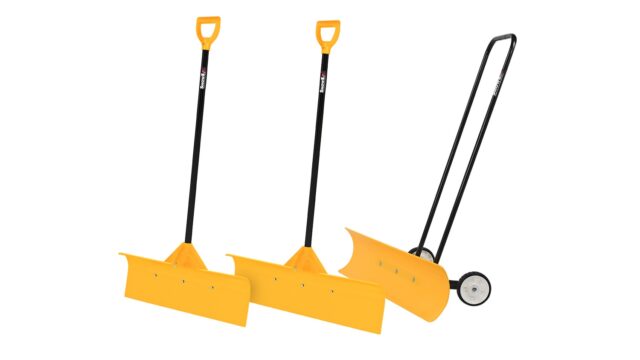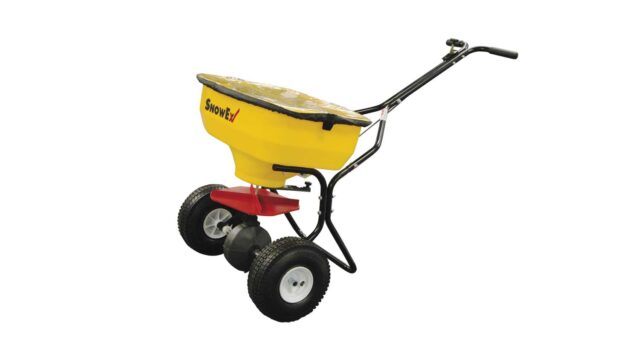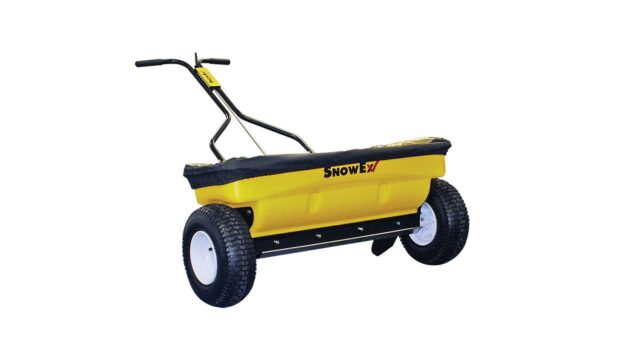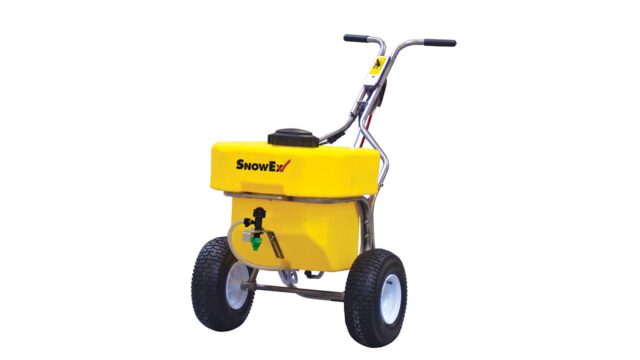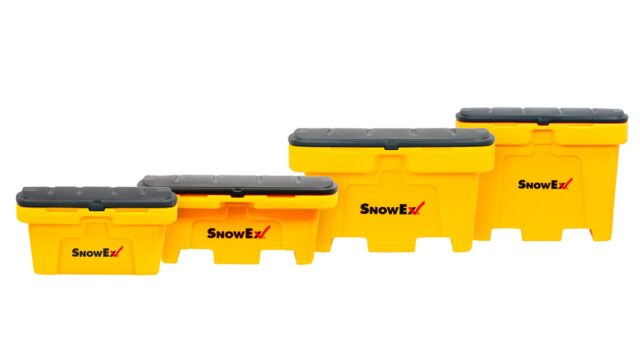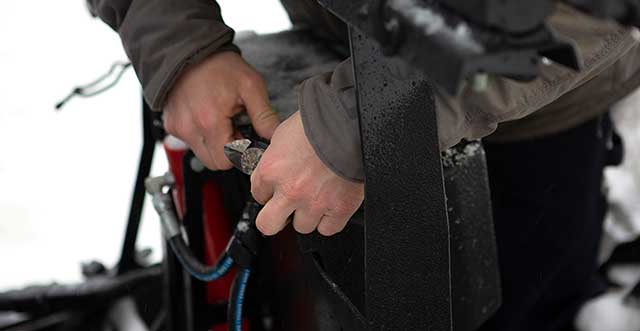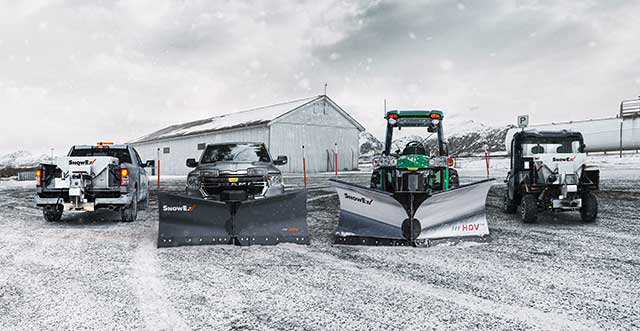Corrosion Control to Keep Snow & Ice Equipment Looking Fresh & Working It’s Best
Created March 4, 2022
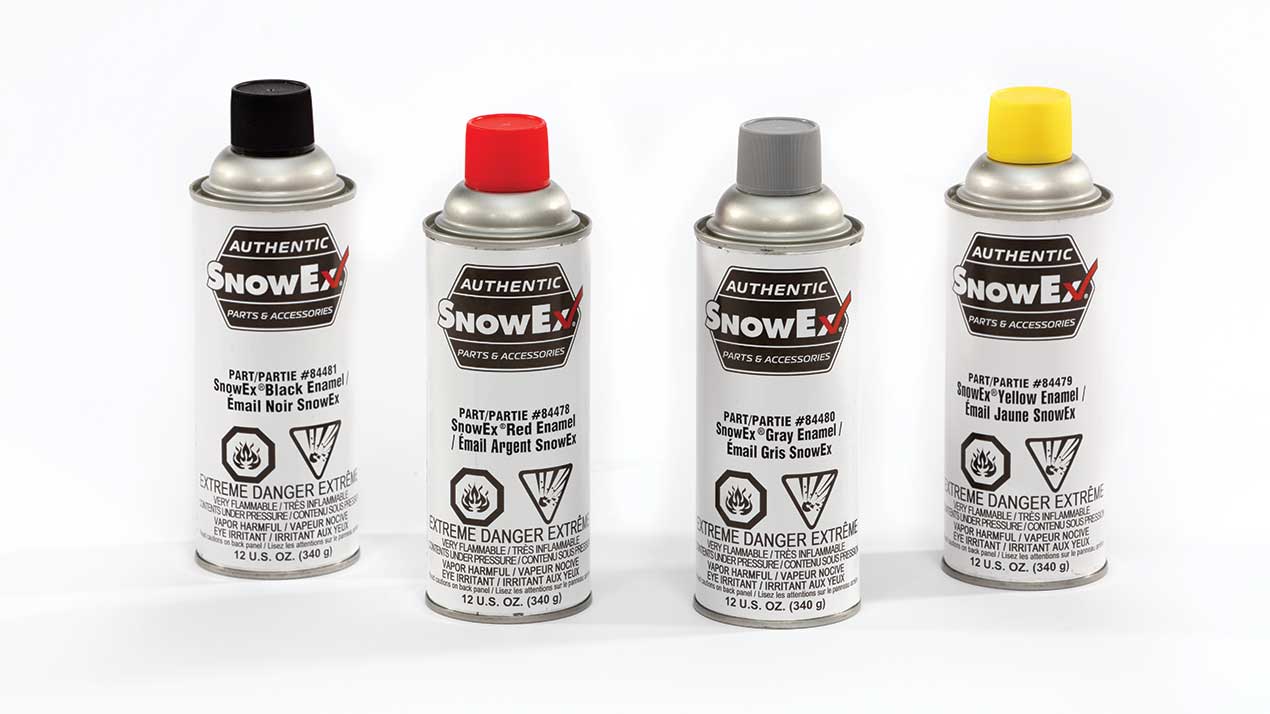
Rust and corrosion are familiar foes to most snow and ice management professionals. If not taken care of properly, snowplows and salt spreaders can experience poor performance, structural damage, electrical issues, and even system failures due to neglect.
How Salt Reacts to Different Materials
Snowplows typically come in stainless steel or have a powder coat finish whereas spreaders are usually built from stainless steel or low density polyethylene. Although stainless steel is corrosion-resistant and virtually maintenance free, it still needs to be cleaned regularly because not every part is stainless. A powder coat finish requires a bit more care and may need paint touch ups over time. Poly is a popular option for spreaders because it’s non-corrosive and also has the added benefit of being lightweight.
No matter what material your equipment is made of, follow these best practices to ensure it continues to look great and can live up to its full potential.
Maintenance is Your Best Defense Against Corrosion
Being proactive is key to extending the life of your vehicle and winter attachments. Maintenance can reduce repair costs, and most importantly, protect your bottom line. It will also improve the resale value of your equipment when trying to sell or upgrade your gear. Rust is the first thing a buyer will look for and could be a red flag that it lacks maintenance. So, when planning to face rust and corrosion head-on, there are a few essential things to consider.
-
- Equipment Inspection:
At the beginning and end of each season, conduct a full inspection on your setup from plow mount to truck, giving keen attention to all attachment points. This will make you aware of any problem areas that need to be addressed right away and note other aspects to keep an eye on. The goal is to make sure there are no structural issues, and that all equipment is in safe operating condition.If there are any worn or rusted parts, it’s best to replace those early to avoid a breakdown later. The best time to do this is pre or post-season to avoid down time.
- Equipment Inspection:
-
- Post-Storm & Post-Season Maintenance:
An ounce of prevention is worth a pound of cure. The best thing to do throughout the season is to give your equipment a little care after each storm. A deep clean to wash all the salt off is critical to reduce rust from starting and spreading. Make sure this is done in a warm, dry environment like a heated garage or shop. If there is any material left in your spreader, remove it after each use so it doesn’t turn into a brick and clog your spreader.Apply dielectric grease on all electrical leads, fittings, and connection points to keep water and moisture out of your electrical system. This also creates extra insulation and ensures a strong contact for electricity to flow through while preventing arcing.
- Post-Storm & Post-Season Maintenance:
-
- Safe Cleaning Materials:
Using a “safe” soap to neutralize the chloride in salt will be super helpful to reduce corrosion. Salt-Away and Salt Cutter are a couple well-known brands that can be purchased at most big-box stores. Once dry, apply Fluid Film®, or another oil-based lubricant, to coat the metal and sensitive parts to prevent salt and moisture from contacting any bare metal.
- Safe Cleaning Materials:
-
- Fixing Chips & Scratches:
If cosmetic, surface rust has already formed, it could spread and bubble. You’ll want to address this throughout the season to prevent it from getting worse. It may seem tedious, but if you don’t take care of corrosion, it will destroy your equipment over time. At a bare minimum, touch up your equipment annually (post-season). SnowEx® Factory Original paint and primer are available through your local dealer.
- Fixing Chips & Scratches:
Advice When Restoring Your Plow or Spreader
Rust in any form is not ideal, however surface rust is more manageable than structural rust. Since it’s mostly cosmetic, there might be a slight impact on performance, but it doesn’t compromise the integrity of the equipment like structural rust will. You may just notice that it doesn’t throw snow as far or roll it quite as well as it used to.
The good news is that with a little time and effort, you can easily restore your equipment. First, scrape any trouble areas down to the bare metal. Next, it’s a trio of sanding the area, applying primer, and then painting it. Here are a few additional tips:
- Be sure to get the entire area around the rust in case there are hidden, underlying spots. If you leave the edges, you will most likely have problems later and need to do this again, so it’s best to sand more than what’s needed to make sure you get everything
- Primer is essential because it adheres to the metal and can help prevent chipping later on. This is an important step that can make a huge difference. This is not the place to try and save time by skipping steps!
- If you’re doing a more in-depth restoration, you can also purchase sticker and decal kits to put the finishing touches on your work.
- If rust covers 25% or more of your equipment, we recommend taking it to a sandblaster to remove the entire layer of powder coat and rust. From there, you can start over with a clean blade. Cost varies depending on the job and market.
If you plan on attempting a restorative project, do it in the summer before the next season starts. It can be a strenuous project to undertake and not ideal to try while in season. Plus, if your efforts are unsuccessful and you need to buy new equipment, you’ll be ready to go well before the first snowfall.
Signs That You Need to Replace the Equipment
Once rust starts to eat away at the structure and frame, it’s no longer in safe operation and needs to be replaced. While these components are built to withstand brutal winters, significant and prolonged stress will cause damage over time and heighten the risk of it becoming a liability to you and your business.
Corrosion may cause the frame to no longer lift properly or remain level while in operation. This results in uneven wear, poor scraping ability, and a messy trail of snow left behind your plow. We strongly advise against trying to weld components back together. At this point, it is already too late. You risk catastrophic failures that may cause unsafe operating conditions.
Common Questions, Answered by the Experts
Here are a few additional tips that will help reduce the chance of rust from forming and keep your equipment performing its best.
Will cooking spray enhance the performance of my snowplow?
While this is an old myth that has been around for a while, we do not recommend using cooking spray on the plow blade. Most assume it will help with snow rolling when it actually does the opposite. Over time, dirt and abrasive materials can collect on the oil film, causing a rough surface to develop on your blade. This prevents snow from rolling and slipping off the blade. This is not the intended use of cooking spray and could compromise the powder coat on your plow. Keep it clean, and it will do its job.
Can I store my equipment on wooden pallets?
We wouldn’t recommend that. Wood stores moisture and is a corrosive substance by nature that can be made more corrosive with various treatments. For example, the tannic acid in oak lumber is known for corroding iron and steel. Oxides leached from rusting metal bleed away from nails and screws, leaving dark stains. When in poor ventilation, wood can even corrode nearby metal without actually coming in contact with it as tannins are released into the air.
When storing equipment outside, should I cover it with a tarp?
When storing your plow for the season, avoid using a tarp when leaving it outdoors. Even the blue waterproof tarps restrict airflow, causing condensation when temperatures change that end up trapping humidity and enhancing corrosion.
Don’t let rust compromise the durability and performance of your equipment or it could negatively affect your business reputation. For more maintenance tips, visit these helpful resources.
